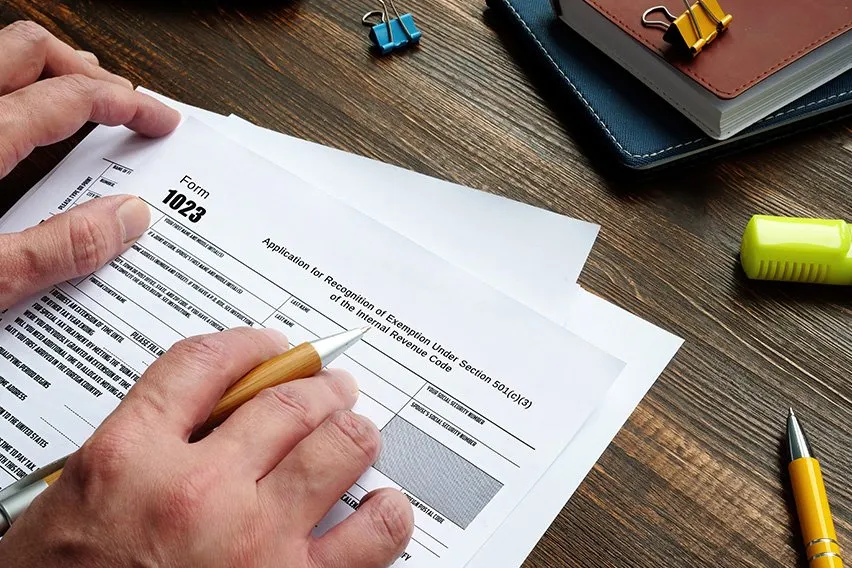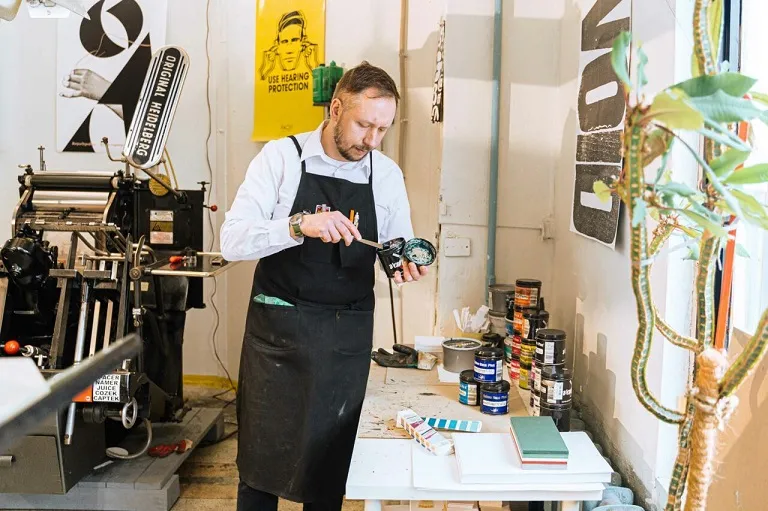6 Steps for Estimating a Painting Job in Canada

Putting together an accurate estimate for a painting job requires understanding and balancing multiple moving parts. You need to pick the right paint colour and quality of paint, have enough workers and include the right supplies to get the job done.
So where do you start? What’s the best place to start creating an accurate estimate?
Knowing what to include is important to make sure your estimate is not only accurate, but it’s competitive enough to land that next painting job. You don’t want to price too low that you don’t earn a profit, but you also don’t want to price yourself too high that you don’t get the work.
To help, we have compiled a list of what you should consider when putting together your estimate and how to break everything down. You’ll keep your cash flow happy, your customers happy and be able to compete at a level that represents the services you offer.
If you want some extra assistance in getting started, FreshBooks’ online estimating software is a good place to start. You can easily create and send estimates to customers and then convert them into invoices when the job’s complete.
In this article, we’ll cover:
How Much Does a Painter Charge in Canada?
Is There an Average Price Per Square Foot?
What Do Painters Charge Per Hour in Canada?
6 Steps for Estimating a Painting Job in Canada
How Much Does a Painter Charge in Canada?
This is one of the areas of a painting job that’s going to differ due to several circumstances. For example, your location is going to play a big role in how much you charge. Plus, specific requirements for different jobs will make the price either much lower or much higher.
For example, the size of a room or the house that’s getting painted, the condition of the walls and the price of the paint are all taken into account.
However, painters in Canada will charge around $400 to paint a smaller room and up to $900 for larger rooms, according to Home Painters.

Is There an Average Price Per Square Foot?
The price per square foot can depend on whether or not the job is an interior painting job or an exterior one. Interior painting jobs can typically be easier to price since they can be fairly straightforward. But exterior jobs can often be more complex if there’s additional prep work required or if there’s more than one storey that needs to get painted.
But, it can be a common starting point to charge around $2 to $3 per square foot to paint the interior of a house, according to Home Painters.
For exterior jobs, the total square footage plus the surface that’s getting painted is taken into account. The average cost to paint a small brick house can start around $750. However, that price can skyrocket all the way up to $9,000 and over for much larger jobs.
Another thing to consider is the price of the paint used. An interior room can range anywhere from $150 to $900 which considers the price of paint and the labour costs associated, according to Jiffy on Demand.
What Do Painters Charge Per Hour in Canada?
Similar to the price per square foot, the hourly rate that a painter charges can fluctuate depending on specific circumstances. But according to Indeed, the average painter’s hourly wage in Canada is $22.51.
And while that’s the average hourly rate, the experience of the painter, the difficulty of the job and the location will all need to get factored in. For example, a painter in Toronto might charge up to $50 per hour, whereas a painter in Peterborough might charge much less.
Specialty painting jobs will also see the hourly rate increase since they will require specific expertise and extra supplies.
6 Steps for Estimating a Painting Job in Canada
We’ve put together 6 steps for you to follow to create the most accurate estimate for your next painting job. You will have a better opportunity to stay within your client’s budget, be competitive and continue to earn a profit for your business.
1. Always Visit the Job Site First
One of the most important things you can do first is to visit the job site. You want to get the most accurate information for your estimate and the best way to do that is to see things for yourself. This way, you can inspect the areas that need to get painted and see if there will be any extra supplies or time required.
It’s also a great way to discuss details with the customer and ask some specific questions. They can show you the exact space or area that will get painted and explain how they would like it done. As well, you can get a better sense of the overall square footage to help develop your estimate accurately.
Be sure to bring a laser measurer or a tape measure to get accurate readings. It will save any guesswork in the future and then you can move on to step two.
2. Determine Paint Costs
When you visited the job site you would have asked the customer about which colour of paint they wanted as well as the type of paint. This is important information to know not only because it’s important to reach customer expectations, but different types of paint are going to have different prices.
For example, latex paint will cost anywhere from $35 to $80 per gallon, and oil-based paint will range from $25 to $70 per gallon. Plus, the specific colour will also come into play.
Let’s say when discussing all these details with the customer, they told you they wanted latex paint and chose a colour that came in at $35 per gallon. Here are a few rough estimates of how much paint you will need based on different sized houses in Canada:
- 1,500 square foot house: 10 gallons of paint = $350
- 2,500 square foot house: 15 gallons of paint = $525
- 4,000 square foot house: 25 gallons of paint = $875
Once you can determine an estimate for paint costs, you can move on to step three and put together all the supplies and materials you will need.
3. Add In the Cost of Materials and Supplies
There are always going to be extra materials and supplies needed, especially since each painting job you do is going to be a little different from the last. When you visited the job site in step one, you should have already started thinking about some of the supplies you might need to complete the job.
Here are a few materials and supplies that you might expect to have to include in your estimate:
- Paint brushes
- Paint rollers
- Drop sheets
- Caulking
- Painters tape
- Primer
- Ladders
- Sanding paper
Exterior paint jobs can often require some extra supplies since there might be extra prep work needed or if there’s a brick surface to paint over, for example.

4. Include the Labour Costs
Whether you need two workers, ten workers or you’re going to complete the job by yourself, accounting for the cost of labour is an important piece of any estimate.
As well, it’s important to make a note during your site visit if you think anything will cause the job to take longer than the customer expects. Things like extra prep work, multiple coats of paint and painting difficult areas can all increase the time to complete the job.
According to Indeed, the average hourly rate for a painter in Canada is $22.51.
As an example, let’s say that you are going to need two painters to paint the interior of a 2,000 square foot home. You estimate it will take around two days to complete or 16 total working hours. You can calculate the labour costs like this:
2 painters x 16 working hours = 32 total labour hours
32 labour hours x $22.51 hourly rate = $720.32 in labour costs
5. Include Your Markup and Overhead Costs
You want your estimate to be fair and accurate so that you can land the painting job. Yet, you also want to make sure that your business can earn a profit from the services that you provide. To help do this, you can include your markup in the estimate.
For new businesses, it can be common to operate at a 30 percent margin. So including a 50 percent markup for your business would work well to start, according to Painting Business Pro.
When determining your markup it’s also important to consider any overhead costs that you have. These are costs that aren’t directly related to the job itself but are still required for your business to operate. Think about things such as fuel to get to job sites, rent and utilities if you have an office, marketing costs and insurance costs, to name a few.
6. Finalize Your Estimate
Now you’re ready to do the final calculations. From step one to step five, you were able to visit the job site, determine labour costs, paint and supply costs, and factor in your markup and overhead costs.
The next and final step is to add all of these together to generate an accurate estimate to send to your customer.
Key Takeaways
Estimates can be difficult and making sure you include everything you need can add to the challenge. But the best thing you can do for each job is to visit the site before starting your estimate. You can see what needs to get done and have a better sense as to the amount of paint, the number of workers and what supplies you will need.
This will let you get ahead and be able to include everything you need in your estimate. And, ultimately, you can provide the most accurate estimate to your customer. Use the six steps outlined in this guide to stay competitive, earn a profit and land that next painting job.
Did you enjoy reading this guide? Head over to our resource hub for more great content!
RELATED ARTICLES

 What Is a Digital Wallet and How Does It Work?
What Is a Digital Wallet and How Does It Work? 10 Best Proposal Software for 2025 in Canada
10 Best Proposal Software for 2025 in Canada 5 Expense Tracker Apps for 2025
5 Expense Tracker Apps for 2025 Tax Exemption Requirements for Organizations
Tax Exemption Requirements for Organizations How Much Cash Can You Deposit?
How Much Cash Can You Deposit? Tax Deductions for Small Business Canada
Tax Deductions for Small Business Canada